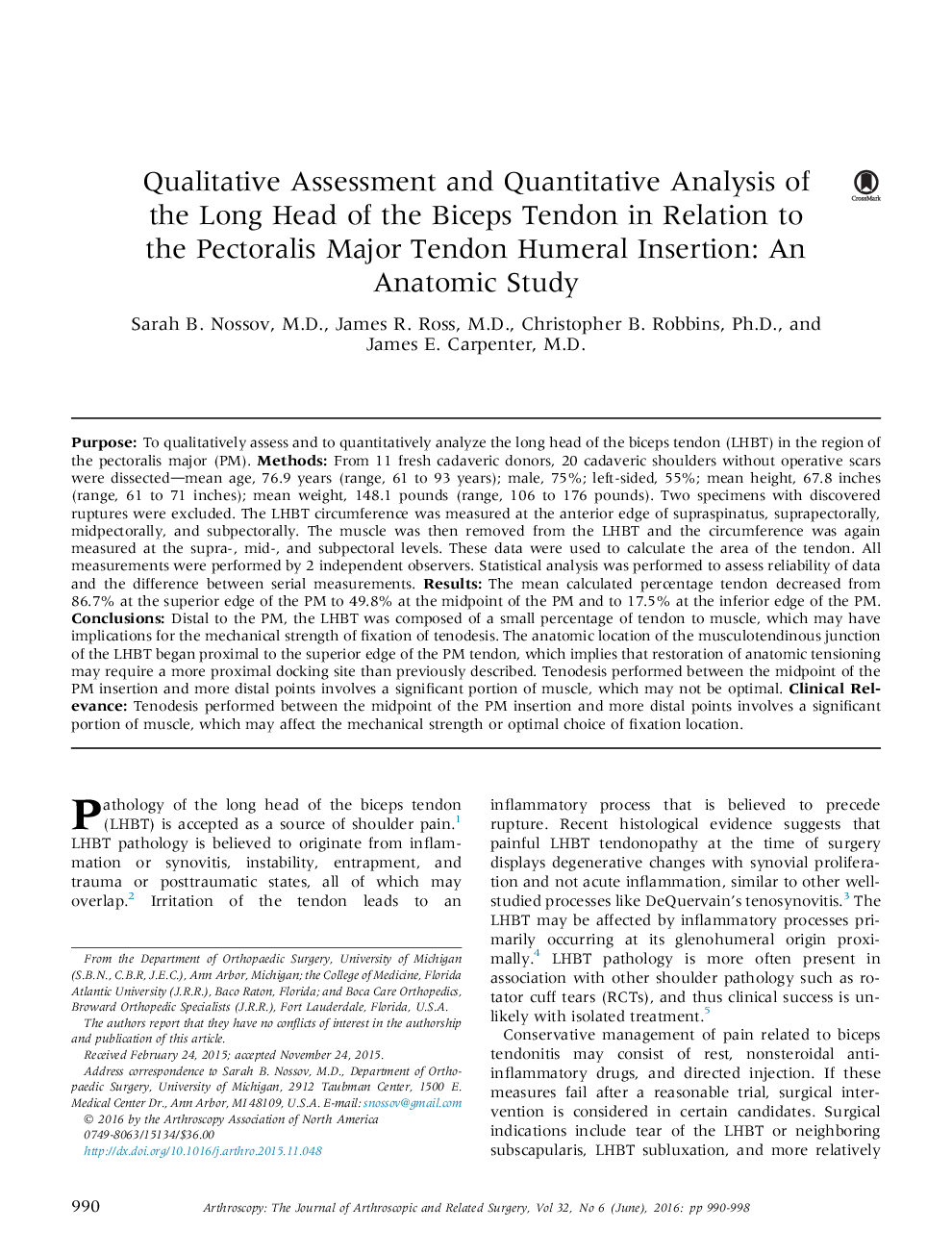| Article ID | Journal | Published Year | Pages | File Type |
|---|---|---|---|---|
| 4041834 | Arthroscopy: The Journal of Arthroscopic & Related Surgery | 2016 | 9 Pages |
PurposeTo qualitatively assess and to quantitatively analyze the long head of the biceps tendon (LHBT) in the region of the pectoralis major (PM).MethodsFrom 11 fresh cadaveric donors, 20 cadaveric shoulders without operative scars were dissected—mean age, 76.9 years (range, 61 to 93 years); male, 75%; left-sided, 55%; mean height, 67.8 inches (range, 61 to 71 inches); mean weight, 148.1 pounds (range, 106 to 176 pounds). Two specimens with discovered ruptures were excluded. The LHBT circumference was measured at the anterior edge of supraspinatus, suprapectorally, midpectorally, and subpectorally. The muscle was then removed from the LHBT and the circumference was again measured at the supra-, mid-, and subpectoral levels. These data were used to calculate the area of the tendon. All measurements were performed by 2 independent observers. Statistical analysis was performed to assess reliability of data and the difference between serial measurements.ResultsThe mean calculated percentage tendon decreased from 86.7% at the superior edge of the PM to 49.8% at the midpoint of the PM and to 17.5% at the inferior edge of the PM.ConclusionsDistal to the PM, the LHBT was composed of a small percentage of tendon to muscle, which may have implications for the mechanical strength of fixation of tenodesis. The anatomic location of the musculotendinous junction of the LHBT began proximal to the superior edge of the PM tendon, which implies that restoration of anatomic tensioning may require a more proximal docking site than previously described. Tenodesis performed between the midpoint of the PM insertion and more distal points involves a significant portion of muscle, which may not be optimal.Clinical RelevanceTenodesis performed between the midpoint of the PM insertion and more distal points involves a significant portion of muscle, which may affect the mechanical strength or optimal choice of fixation location.
